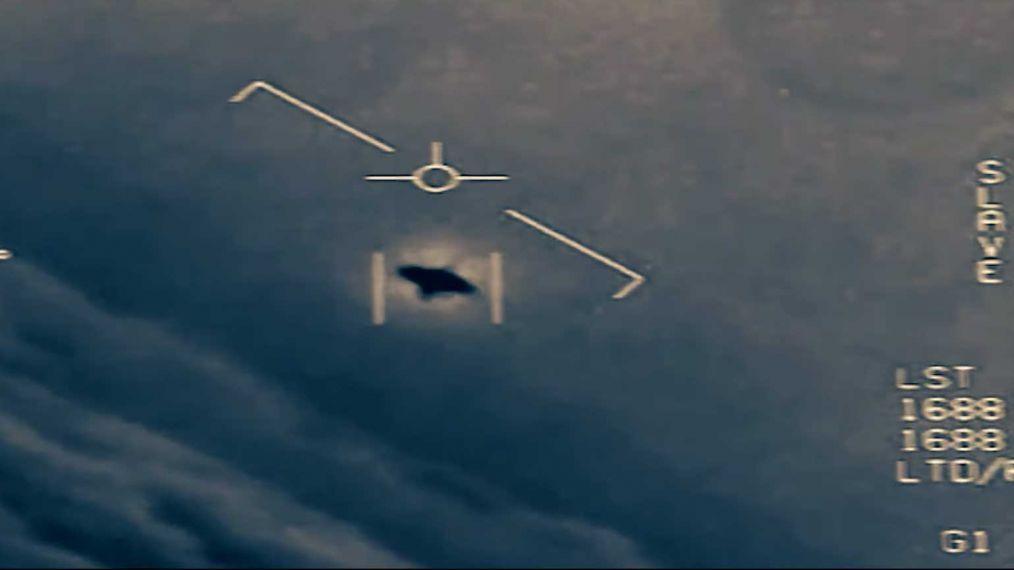Pentagon UFO Program Still Exists. But Navy’s Alien Sightings Don’t Add Up.
Article by Seth Shostak August 2, 2020 (nbcnews.com)
• The New York Times recently reported that in spite of a Pentagon UFO research program being shut down in 2012, a new one has taken its place. This gives a hundred million Americans hope that there must be something worth looking at… aliens perhaps?
• When The New York Times reported in 2017 that Navy pilots captured video of a UFO outmaneuvering their jets over the Pacific Ocean, they felt compelled to look into it due to national security concerns. Or is this a ruse by the government to make the public think that the military thinks that these are probably Russian or Chinese technologies, so that the public won’t be thrown “into chaos”?
• The NY Times also revealed that the government has in its possession “retrieved materials” that are “not made on this Earth”, and possibly even recovered alien spacecraft. This claim seems suspect. The Navy pilots didn’t report picking up pieces of alien technology or strange metal alloys, so it’s unclear where these “materials” came from. This is a case where seeing might be believing. But no one has let us see anything, which is convenient.
• Senator Marco Rubio, R-Fla., says he is especially concerned by the fact that the extraterrestrials spend a lot of time hanging out above our military bases. But why would such technologically advanced aliens travel trillions of miles to our planet just to ‘play cat-and-mouse’ with Navy jets and monitor our far-less advanced weaponry? Perhaps these aliens come as saviors to protect us from ourselves.
• No, aliens wouldn’t be interested in our pitiful technology. If unidentified craft or drones are watching our military capabilities, then it is more likely they are Russian or Chinese intelligence. Humans are too quick to ascribe strange phenomena to superhuman beings, much as the Greeks believed that lightning bolts were javelins tossed by Zeus. There is no solid ‘science’ that supports these unidentified objects being extraterrestrial.
• The Office of Naval Intelligence will supposedly make regular reports on at least some of its UFO findings. Is this good news for the Fox Mulder crowd who ‘want to believe’ in UFOs? Or will it rob these believers of their best evidence – which is no evidence at all?
• [Editor’s Note] As the Senior Astronomer for the SETI Institute (Search for Extraterrestrial Intelligence) which peers at distant stars through radio telescopes looking for clues of extraterrestrial civilizations, Seth Shostak’s continuing fame and fortune lies in never finding any aliens at all, so he can keep on “searching”.
To this end, he pens this article that twists and contorts until he finally reaches his foregone conclusion – that extraterrestrials have not yet come to this planet. Shostak’s tortured premise is that highly advanced extraterrestrial beings would have no interest in our inferior technology, although the Russians or the Chinese may have. To believe that UFOs are of an extraterrestrial origin is a testament to the feeble human mind that ascribes anything unknown to supernatural causes. There is no hard science supporting alien technology, and there are no ‘alien materials’ or recovered alien craft in the government’s possession.
Shostak is a proud standard-bearer for the Deep State, continuing to debunk the extraterrestrial presence in any way he can, just as others before him have done for over seventy years. He must be aware that aliens exist here in our solar system. But his job is to lie to the public and attempt to make a mockery of the UFO disclosure movement, while posing as a responsible scientist. Unfortunately for Shostak, more and more people are waking up to this deceit and recognizing him for the despicable charlatan that he is.
Is it vindication at last? The New York Times has recently reported that a supposedly canceled Pentagon project to investigate

strange aerial phenomena is still showing a pulse. The clandestine effort, originally known as the Advanced Aerospace Threat Identification Program, was said to have ended in 2012. But, apparently, it’s still doing its thing under the auspices of the U.S. Office of Naval Intelligence, and with a new name: the Unidentified Aerial Phenomenon Task Force.
So, where there’s smoke, there’s fire, right? If the feds are still forking over tax dollars to delve into odd goings-on in the sky, it must be because they’ve got convincing evidence of extraterrestrial visitors. That’s the hope of the 100 million or so Americans who seem willing to swear on the Good Book that unidentified flying objects are, at least in some cases, alien objects.
But as with everything UFO-related, it’s worth taking a second, or third, look before rushing to lay out the red carpet for alien houseguests. When, in 2017, the Times first reported on a secret project to study unidentified aerial phenomena, it was in connection with some puzzling videos taken by Navy fighter pilots over the Pacific. The video showed unidentified objects ahead of the jets, objects that seemed to maneuver in bizarre ways. The military has always wanted to know about anything that can fly, so there are plenty of national security reasons for why they would continue such research.
That’s the most straightforward explanation for why the Navy has extended the Pentagon program. It’s also what they’ve said.
But isn’t it possible that what’s really going on here is not an investigation into unknown aircraft or drones, but a distraction to keep us from a more disturbing truth — that UFOs aren’t enemy flying machines, but alien flying machines? Maybe the government doesn’t want to admit this, because they figure the news might throw society into chaos.
FAIR USE NOTICE: This page contains copyrighted material the use of which has not been specifically authorized by the copyright owner. ExoNews.org distributes this material for the purpose of news reporting, educational research, comment and criticism, constituting Fair Use under 17 U.S.C § 107. Please contact the Editor at ExoNews with any copyright issue.
























